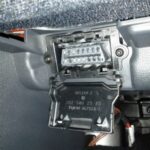Understanding the ins and outs of car diagnostics can be complex, especially when it comes to connecting your devices to your vehicle’s On-Board Diagnostics (OBD2) port. For Android users looking to leverage the power of OBD2 for vehicle insights and modifications, questions about connectivity often arise. Let’s clarify some common points regarding Obd2 Usb Android connections, particularly in the context of tools like bootmod3 (BM3).
Understanding OBD2 USB Android Connectivity
Many users wonder about the necessity of wireless connections when aiming to interface with their car’s OBD2 system using an Android device. Specifically, the possibility of using a direct USB connection is often queried. Let’s address some frequently asked questions.
USB Connection for Android Diagnostics
Is it possible to establish a reliable connection between an Android device and an OBD2 agent using a USB cable? The answer is yes. While Wi-Fi connections are prevalent, a USB connection offers a wired alternative. This can be particularly beneficial in situations where Wi-Fi connectivity is unstable or restricted. For example, if you are in an area with poor Wi-Fi or if your mobile plan limits hotspot usage, a USB cable provides a direct and dependable link.
Alt text: Close-up view of an OBD2 port located in the interior of a vehicle, emphasizing the standard 16-pin connector used for car diagnostics and communication.
To utilize this method, you would typically connect a USB cable from your Android device to an OBD2 adapter or agent that supports USB connectivity. While the specifics might vary depending on the hardware and software you are using (like the BM3 agent), the fundamental principle remains the same: USB can serve as a robust communication pathway.
Powering Your OBD2 Device via USB
Another practical consideration is powering the OBD2 adapter or agent. When using a USB connection to your Android device or car, power can often be supplied through the USB port itself. For instance, the USB ports in your car’s center console are generally sufficient and reliable power sources for most OBD2 agents. This simplifies the setup by reducing the need for separate power cables.
However, alternative powering methods exist for those seeking a cleaner setup. Some users prefer to draw power directly from the OBD port itself, which can help conceal the OBD2 device and minimize visible wiring. This option is often favored by individuals who want to keep their OBD2 agent permanently connected and discreetly tucked away.
Direct OBD2 to Android USB-C – Future Possibilities
Looking ahead, the landscape of OBD2 connectivity is evolving. The emergence of USB-C to Ethernet adapters opens up intriguing possibilities. Imagine connecting an Android tablet directly to the OBD port via USB-C and Ethernet. Technically, this could establish a network connection. However, the current limitation lies in software compatibility.
As of now, many Android applications, including prominent ones like the BM3 app, are not designed to function in this direct-connection mode. These apps are typically configured to communicate through an intermediary agent or adapter. However, developers are actively exploring direct OBD2 to Android USB-C capabilities. Future updates and app revisions may unlock this streamlined connectivity, potentially eliminating the need for separate Wi-Fi or USB agents in certain scenarios.
Full Functionality on Android – Current Status
Currently, achieving full functionality, especially for advanced tasks like bootmod3 flashing and comprehensive diagnostics, directly through an Android phone via USB OBD2 might have limitations depending on the specific application and hardware. While basic OBD2 functions and data retrieval are often feasible, certain advanced features might still require a dedicated agent or a laptop.
For users seeking complete control and access to all features, especially within ecosystems like bootmod3, it’s essential to verify the current capabilities of the Android application. Keep an eye on updates from software providers like PTF (proTUNING Freaks) for potential advancements in direct Android OBD2 USB functionality.
Beyond Basic Diagnostics – Advanced Coding
While the focus here is on connectivity, the potential of OBD2 extends beyond basic diagnostics. Questions often arise about coding other vehicle modules, such as steering, MDM (Motor Dynamic Management), and differential settings. Similar to solutions offered by tools like Thor, users are interested in all-in-one OBD2 solutions for comprehensive vehicle customization.
The feasibility of such advanced coding through OBD2 USB Android interfaces depends heavily on software support and developer roadmaps. While the hardware connectivity might be in place or evolving, the software applications need to be developed to leverage these capabilities fully. For specific feature requests and future plans regarding advanced coding, it’s best to consult the developers of your chosen OBD2 software and tools directly.
Conclusion
OBD2 USB Android connectivity offers a viable and often reliable method for interacting with your car’s diagnostic system. While Wi-Fi and Bluetooth connections are also common, USB provides a direct, wired alternative that can be advantageous in various situations. As technology advances and software evolves, direct OBD2 to Android USB-C connections are poised to become even more streamlined and feature-rich. Staying informed about the latest developments and software updates will ensure you can leverage the full potential of OBD2 diagnostics and tuning on your Android devices.
